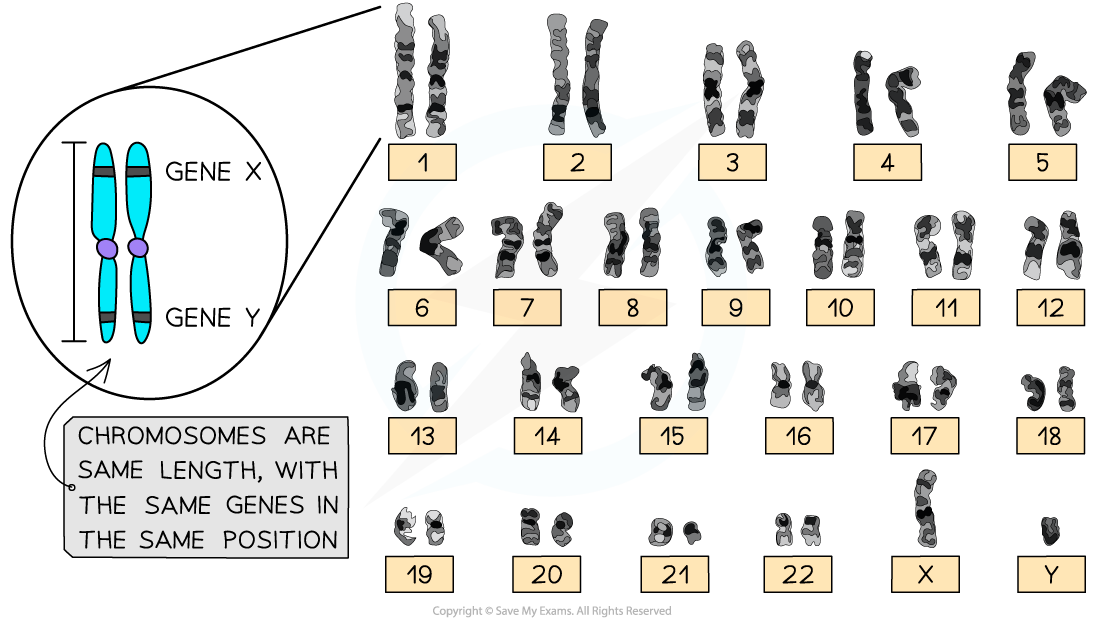Homologous Chromosomes (Cambridge (CIE) A Level Biology): Revision Note
Exam code: 9700
Homologous chromosomes
In diploid cells there are two complete sets of chromosomes in the nucleus
Chromosomes have a characteristic shape
They have a fixed length
The position of the centromere is in a particular location
These characteristic features allow for each chromosome to be identified in a photomicrograph
In photomicrographs chromosomes are often grouped into their homologous pairs
Homologous chromosomes:
Carry the same genes in the same positions (locus)
Are the same shape
During fertilisation a diploid zygote is formed
In a zygote one chromosome of each homologous pair comes from the female gamete and the other comes from the male gamete
Having the same genes in the same order helps homologous chromosomes line up alongside each other during meiosis

Examiner Tips and Tricks
Although homologous pairs of chromosomes contain the same genes in the same order they don’t necessarily carry the same alleles (form) of each gene! i.e. We all have the genes to create eyes, some have the allele to create blue eyes and others the allele for brown eyes, for example.
(A karyogram, as seen in the image, is an organised picture of an organism’s chromosomes arranged in pairs by size and shape.)

Unlock more, it's free!
Did this page help you?